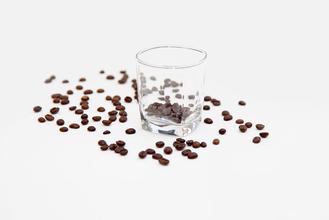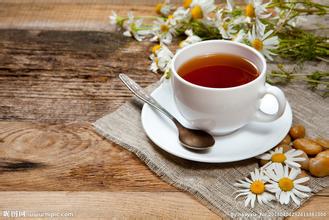What are the basics of coffee?
Coffee is a kind of drink, which gives the public the impression that it is black, bitter, sleepless and excited. The coffee beans we see in the coffee shop are tea-brown, which belongs to roasted coffee beans, while the color of the coffee liquid is amber. Coffee comes from coffee beans, which are harvested and processed from the fruit of trees.
Distribution of coffee:
Coffee trees grow in national gardens in tropical or subtropical regions with the equator as the center and between latitudes 25 degrees south and north, called the coffee belt. At present, coffee is produced in more than 60 countries, widely distributed in South America, Central America, the West Indies, Asia, Africa, Arabia, the South Pacific and Oceania. In terms of production, Brazil, which accounts for the largest output in the world, accounts for about 30%; the second is Central and South America, which is centered on Colombia (10%), accounting for 60%; followed by Africa and Arabia, accounting for about 30%; the remaining 10% are distributed in Asia and most islands.
The growth habits of coffee:
Coffee trees belong to the evergreen family of Akanaceae. They are tropical plants that are not cold. Most of them are planted in areas with elevations of 300,400m, and also in highlands with elevations of 2000-2500 meters. But those who plant on slopes above 1500 meters above sea level have better quality. Coffee trees are most suitable for growing in an environment where the average temperature is about 20 degrees Celsius, annual precipitation is 1500-2000 mm, soil permeability is strong, and sunshine is suitable. Coffee is afraid of Frosts Descent and the cold winter, and must not be planted in the highlands where frost falls. Generally speaking, wild coffee trees can grow to about 8 meters. They are planted at home. In order to protect the quality of coffee beans, facilitate management and harvest, the height is cut to 2 meters. Coffee beans begin to bear fruit 3-5 years after sowing, and 5-20 years is the harvest period. A coffee tree can produce about 3-5 kilograms of coffee cherries per year.
There are three types of coffee:
At present, there are three kinds of coffee: Arabica, Robusta and Liberika.
Arabica species:
Produced in Elaraby Sinia (now Ethiopia), the quality is the top of the three tree species, accounting for 2/3 of the world's coffee production, coffee beans oval flat, planted in the highlands. It has strong fragrance and good quality.
Robusta species:
Produced in the African Congo, strong disease resistance, high temperature resistance, slightly smaller fruit, accounting for 30% of the world's output, bitter but not sour, the flavor is not very good, most are used to make mixed coffee;
Libby card species:
Liberia, which is native to Africa, has a later cultivation history than Arabica. It is characterized by light fragrance and strong bitter taste, and its quality and output are poor.
Structure of coffee cherries and classification of coffee beans:
Coffee beans are fresh and green raw beans obtained by removing their red flesh, peel and silver skin from coffee cherries. The structure of coffee cherry is exocarp, pulp, endocarp, silver peel and seed from outside to inside. Coffee cherries are oval in shape.
Coffee beans can be divided into round beans and flat beans, round beans refer to a coffee cherry, usually have two coffee beans, but some have only one because of incomplete embryonic development, that is, round beans, which are oval in shape. Flat bean refers to a coffee cherry, usually the fruit of coffee is composed of two oval seeds, because its joint is flat, it is called flat bean.
The rest of the coffee:
Coffee flowers are white in color, fragrant jasmine, withered in about 3-4 days, and 6 petals (5 male and 1 female, split into two at the front end). The cotyledon tip of coffee is pointed, the two pieces are relatively grouped, the leaf surface is dark green, the back is light green, oval.
The higher the growth height of coffee beans, the higher the acidity, and the price of coffee beans is higher than that of coffee with proper sour taste, such as Blue Mountain Coffee, which is naturally balanced in sour, sweet and bitter taste and full of flavor, so the natural price is not cheap.
Coffee has four flavors and one fragrance: fragrance, bitterness, sour, mellow and fragrance. Aroma is the life of coffee and the best expression of coffee production process and roasting technology.
The ingredients of coffee:
The main ingredients in coffee are caffeine, tannin, fatty acids, protein, sugar, moisture and other minerals. The proportion of each ingredient is not the same for all kinds of coffee. It varies according to the type, production, storage and baking methods.
Raw bean
Baked beans
Concrete explanation
Water content
11.3%
2.5%
Fat
11.7%
13.2%
The fat contained in coffee plays a very important role in its flavor, mainly acidic fat and volatile fat. The strength and type of acid in acidic fat are different. Volatile fat is the main source of coffee aroma. It can emit about 40 kinds of aromatic substances. Once the fat in roasted coffee beans comes into contact with the air, in addition to chemical changes, the taste and flavor also become very poor.
Protein
11.8% ~ 12.8%
The main source of calorie, the proportion is not high, because most of the protein will not be dissolved, so the intake of nutrition is limited, coffee has become a sacred product of dieters.
Sugar
8.0% ~ 1.8%
In unsweetened coffee, in addition to feeling the bitterness of the coffee, there is also some sweetness in the sour taste of tannin, which is sugar, which is mostly converted into caramel after roasting, bringing a unique brown to the coffee, which subtly combines with tannin acid to produce a slight sweetness.
Caffeine
1.3% ~ 1.3%
A plant flaxanthin (animal muscle ingredient) of the same properties as the cocoa halogen contained in cocoa and green tea. The percentage reduction after baking is minimal, and the bitterness in coffee is made by caffeine.
Tannic acid
6.0% ~ 4.0%
After refining into a yellowish powder, it is easy to melt into the water as soon as it is boiled and decomposed to produce pyroic acid, making the taste worse. If you brew well and leave it for a few hours: the color of the coffee liquid is thicker than when it was just soaked, and it is not tasty enough, so there is the saying that "it is best to finish it as soon as possible."
Mineral
4.2% / 5.2%
There are lime, iron, sulfur, phosphorus, sodium carbonate, chlorine, silicon and so on.
Crude fiber
28.6% ~ 29.6%
The essence part
17.1% ~ 29.6%
Can be divided into several kinds, accounting for nearly 1/3 of baked beans, but it is not known what the effect is.
Major coffee producing countries:
Brazil: Brazil accounts for about 1/3 of the world's coffee production. Although it occupies a very important position in the whole coffee trading market, because the Brazilian coffee processing industry has adopted the price strategy from the very beginning, that is, low price and massive planting, the coffee produced is of average quality and less excellent grade. it is generally considered to be an indispensable coffee bean in mixed blending.
Colombia:
Colombia is the second largest coffee producer in the world, accounting for about 12% of the world's total coffee production. Although the output ranking is lower than that of Brazil, its coffee beans are of good quality. Coffee trees are planted in the highlands, cultivated in a small area, harvested carefully, and processed in a wet manner, the coffee produced is beautiful in quality, rich in flavor and unique in flavor, which is very suitable for drinking alone or mixing.
Costa Rica:
The producing area can be divided into three areas: the Pacific coast, the Atlantic coast and the middle zone. All the coffee beans are quite large, fragrant with sour flavor, are first-class coffee beans, have a high rating.
Hawaii:
On the island of Cona, off the south coast of Hawaii, there is a well-known and traditional Hawaiian coffee-Hawaiian Cona. This kind of coffee bean grows only on Connor Island and is the only coffee produced in the United States. The volcanic rock and soil on the coast of Connor breeds this fragrant, mellow coffee. The top-grade Connor has a slight wine aroma in its moderate acidity, with a very rich palate and irresistible aromas. If you like to enjoy the voluptuous aroma of coffee before tasting coffee, or if you think Indonesian coffee is too strong, African coffee is too strong, and Central and South American coffee is too strong, Kang Na will be your best choice.
Due to the high cost of production, coupled with the popularity of professional coffee in the United States, hundreds of professional coffee roasters have a large demand for Cona coffee beans, making the price of "Hawaii Cona" in the market catch up with "Jamaica Blue Mountain". The best Cona coffee beans are becoming more and more difficult to buy.
Indonesia:
Sumatra and Java are the main producing areas. Sumatra coffee is best known for its rich and palatable high-end manning. On the other hand, the Arabica produced in Java has a good sour taste and is loved by the Dutch.
Jamaica:
Jamaica is the origin of the world's "Blue Mountain Coffee". The quality of coffee produced in Jamaica is polarized. the quality of coffee grown in the lowlands is very common and is only used to make scale. Why don't you take 5? Knock on the boy? Do you still want to travel to the emperor? Lan Xian offers Gang Mudou Sodium framing? BR >
Kenya:
Located in Kenya near East Africa, the coffee beans planted are high-quality Arabica varieties. The size of beans is medium to large, very thick and delicious, moderate acidity, according to the size of coffee beans is divided into seven grades, and according to the taste from top to bottom into six grades.
Ethiopia:
For the origin of coffee, beans are small and fragrant, and have a unique flavor, usually known as "mocha". Ethiopia is classified as 1-8 according to the ratio of defective beans.
Coffee producing areas:
Central America and the Caribbean:
Coffee occupies an extremely important economic position in Mexico, Panama and some countries along the Caribbean coast, and the coffee they produce (washed Arabica) is usually of high quality.
South America:
Brazil, the largest country in South America, with an average annual export of 20-30 million bags of coffee beans, is known as the world's largest coffee producer, accounting for about 1/3 of the world's total output. The main varieties are natural Arabica, followed by Colombia, Venezuela, Peru and Ecuador washed Arabica.
Africa:
Located in the hottest center of the tropics, most African countries produce Robasda varieties of coffee beans. Arabica coffee beans also grow particularly well in the high mountains of Kenya, Tanzania, Ethiopia and Cameroon.
Asia:
Due to advanced and excellent technology, the production ratio of "washed Arabica coffee beans", "washed Robastar coffee beans" and "natural Robastar coffee beans" has increased significantly in India and Indonesia.
In the world coffee market, Arabica coffee accounts for about 75-80%, while Robasda coffee accounts for 20-25%. Coffee production throughout the year is about 91 million bags, each bag 60 kilograms. Coffee production in Central and South America accounts for about 70 per cent of the world's production, Asia accounts for 20 per cent and Africa accounts for about 10 per cent.

Important Notice :
前街咖啡 FrontStreet Coffee has moved to new addredd:
FrontStreet Coffee Address: 315,Donghua East Road,GuangZhou
Tel:020 38364473
- Prev

2016 Jing'an World Coffee Culture Festival opens
Recently, coffee lovers have a good place to go. As an important event of the Shanghai Tourism Festival, the 2016 Shanghai (Jing'an) World Coffee Culture Festival opened from September 8 to 14, and opened the main venue on the ground floor of Kerry Center, Nanjing West Road, preparing a rich coffee culture feast for the general public. The Coffee Culture Festival brings together coffee suppliers, boutique coffee chains and independent coffee.
- Next

The difference between mocha and latte
Mocha (Mocha Coffee) is produced in Ethiopia. Beans are small and fragrant, with strong sour and mellow taste, moderate sweetness and special flavor. Washed coffee beans are well-known high-quality coffee, often drunk on a single basis. However, if mixed coffee can be blended, it is an ideal comprehensive coffee with ideal flavor. Characteristics: 1, taste: slightly sweet with soft acidity, sweetness has its own unique round ripe
Related
- Beginners will see the "Coffee pull flower" guide!
- What is the difference between ice blog purified milk and ordinary milk coffee?
- Why is the Philippines the largest producer of crops in Liberia?
- For coffee extraction, should the fine powder be retained?
- How does extracted espresso fill pressed powder? How much strength does it take to press the powder?
- How to make jasmine cold extract coffee? Is the jasmine + latte good?
- Will this little toy really make the coffee taste better? How does Lily Drip affect coffee extraction?
- Will the action of slapping the filter cup also affect coffee extraction?
- What's the difference between powder-to-water ratio and powder-to-liquid ratio?
- What is the Ethiopian local species? What does it have to do with Heirloom native species?

